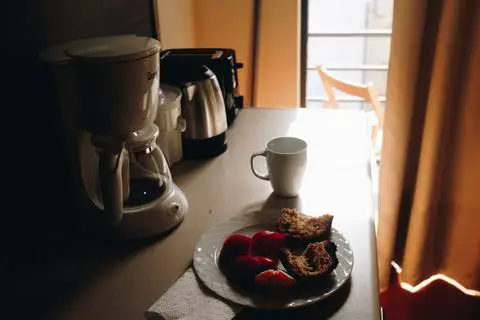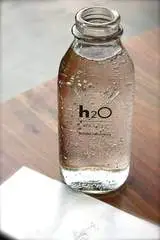The answer to this question depends on how simple your coffee pot is.
Let’s initially assume you are talking about a standard electric drip brewer.

With drip brewing, you are leaving the coffee machine in charge of the pour and the water temperature, so your initial focus should be on the ingredients: 1) coffee beans and 2) water.


In terms of coffee beans, single-origin beans are often preferred by those really looking to focus on particular tasting notes in coffee like Fruity Notes or Floral Notes. Experimenting with different origins to see what coffee notes you like is part of the fun in enjoying coffee. Additionally, it will improve your ability to recognize different notes in blends, which are often harder to discern.
However, if you don’t have access to a store selling single origin beans, then try to pick up some quality coffee at your local supermarket. Counter Culture or La Colombe are really good- but Peet’s is another good option. We reviewed some different coffees you may see at the supermarket:
When grinding your beans, you will want a medium grind for a drip brewer. A burr grinder is produces a more consistent grind than a blade grinder and is therefore preferred.
Next, let’s think about improving your water. Water is important to taste as it actually accounts for the majority of what you are drinking. Coffee shops use expensive filtering systems that then re-add particular minerals back to the water for optimal taste- this is probably not an option for you. Instead, pick up some distilled water at your local supermarket along with some epsom salt and baking soda. Our guide about making the best water for coffee covers how to put these ingredients together to make some incredible water for your morning brew!
Now that we have our ingredients squared away, let’s focus on the few remaining things we can control in a drip brewer. Pre-moisten an unbleached paper filter (to avoid “paper notes” in your coffee!) and insert it into your coffee pot. Make sure you use 1 to 2 tablespoons of coffee per 6 oz water (the “golden ratio” for coffee) and ensure they are evenly distributed in the filter. Tamp the grounds down gently with a spoon or tamper. Go ahead and brew! After the brew is complete, make sure to not leave it on a hot plate for very long if at all as coffee can acquire burnt/ashy notes if left too long.
If your “simple coffee pot” is actually a simple pour-over, then water temperature and pouring become variables you can control.
The temperature of the water should be between 195 degrees F – 205 degrees F. Note that if you boil your water, boiling water is actually too hot (212 degrees F)- so let the boiling water rest for 30 seconds to allow it to drop down to the appropriate temperature.
We have a guide to the fundamentals of pour-over here and a guide on avoiding the common problem of underextracted coffee. We cover pouring technique, specifically, in our pouring guide.

In terms of pour over device, V60 is probably preferred by more people over Chemex, but this is not quite as important some would lead you to believe. The mechanics of why pour-over produces a great cup of coffee generally remain consistent device-to-device. The most important consideration device-to-device is grind size. If using a Chemex, you should aim to use a medium-coarse grind size while you should use a medium-fine grind size on a V60/cone-shaped pour over.
So, in sum, the secret to making a great cup of coffee (even with a simple coffee pot) is always to optimize the variables you can control. With a drip coffee maker, this generally includes:
1) beans, 2) water, 3) grind size, 4) filter (unbleached and premoistened), 5) coffee to water ratio, and 6) even distribution of grounds in the filter.
A pour over gives you control over the additional variables of 7) temperature and 8) pour technique.
For a drip coffee maker, the order of importance (from most-to least important) is probably something like:
1, 5, 3, 2, 6, 4
whereas, for a pour over, the order is probably something like:1, 8, 5, 3, 2, 7, 6, 4
However, your main takeaway should be to focus on controlling what you can control when making a great cup of coffee no matter what your coffee pot is. This way, your drip coffee can be good to the last drop and your pour-over coffee can “bloom where it is planted”!
